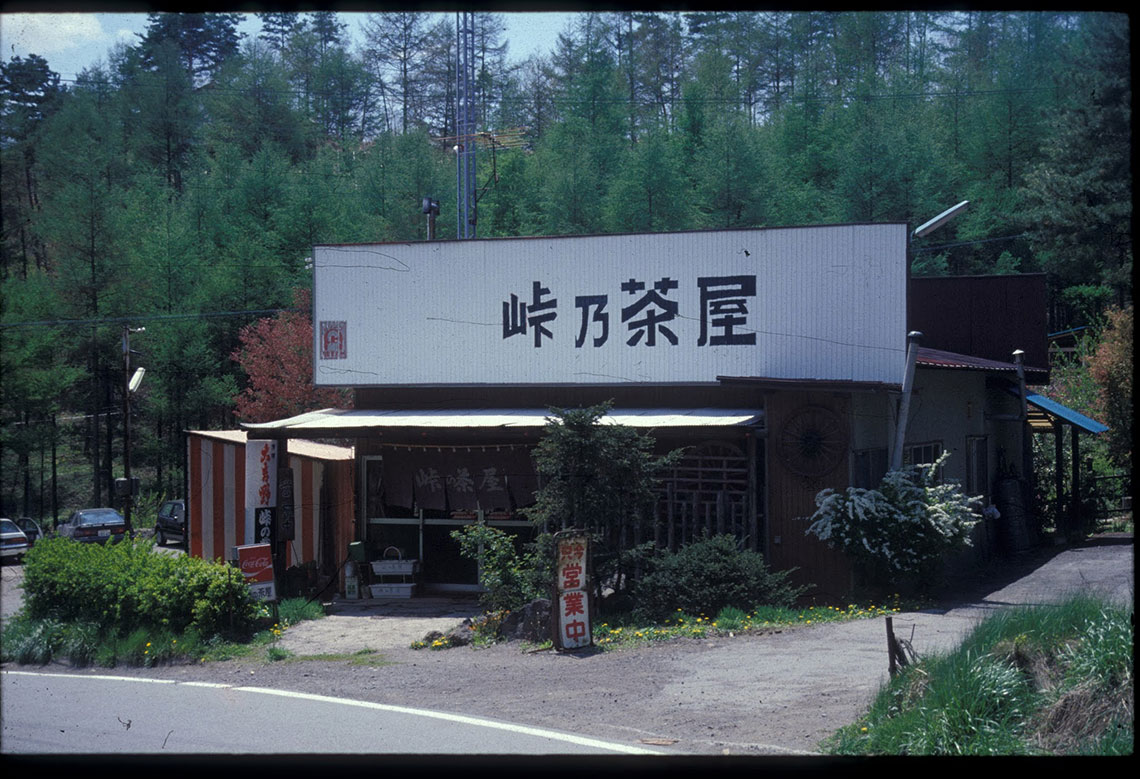Proximity to Wada-toge meant that, even though it was only a medium sized post-town with a population of 720 in 1843, Nagakubo maintained a higher than average proportion of inns. There were 43 recorded in the census that year, and the fact that there were a considerably higher number of females compared to males suggests most of them had a full complement of meshi-mori onna or serving girls who doubled as entertainers. Today Nagakubo has the status of a small rural market town, and although a number of old buildings survive, none still operate as inns.
In the center of the town the old highway made a sharp turn away from the valley to ascend the next pass, Kasatori-toge (height 3200 feet). The exact route of the old highway is difficult to trace, but pleasant tracks running through rice fields can be followed in a direct line to a point near the summit, before the modern highway has to be rejoined. At the summit itself is an unassuming but welcoming teahouse, still serving travelers on the site once occupied by a much older building. Sir Ernest Satow, writing in the 1880s, was sufficiently moved by this spot to claim it had “perhaps one of the finest views on the Nakasendo.”
Descending the pass to Ashita, three and a half miles from Nagakubo, the fields on either side of the road are lined with ginseng plants – a product for which this area is famous. Further down is a magnificent stand of namiki pine trees, perhaps representing one of the best preserved stretches along the whole highway. They have been by-passed by the modern road because the space between the avenue of trees is insufficient for cars and trucks to pass each other.

Approaching Ashita post-town


